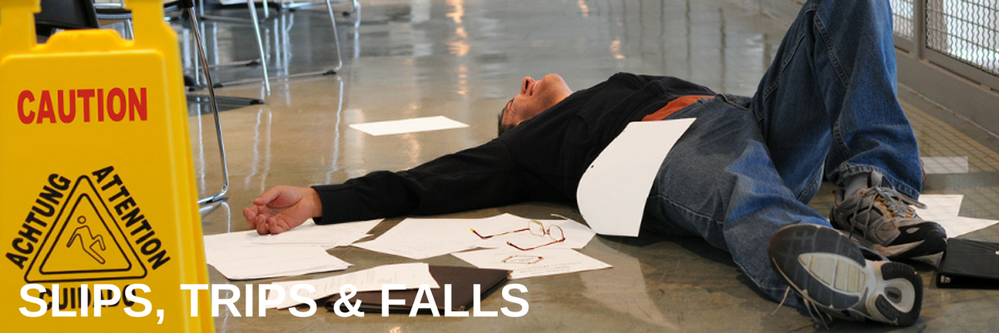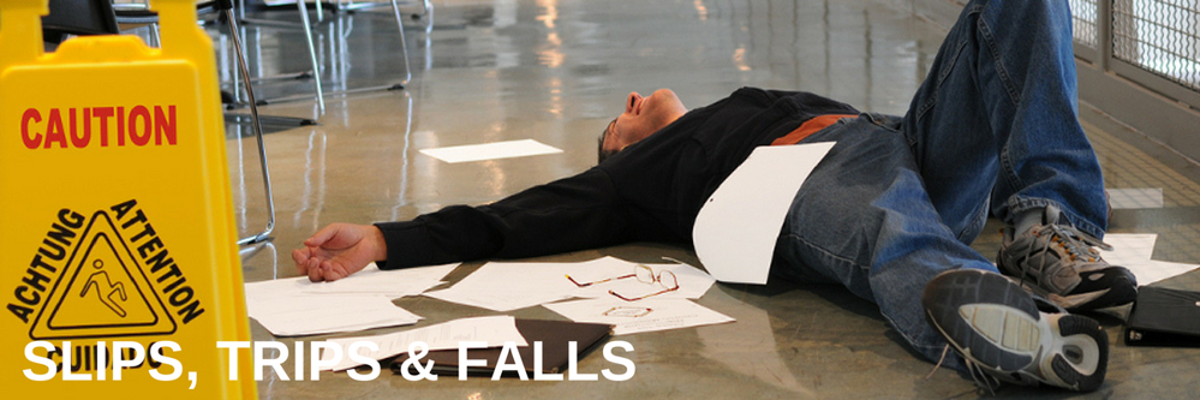SLIPS AND TRIPS IN HEALTH AND SOCIAL CARE
Slips, trips and falls can have a serious impact on the lives of employees. They account for around HALF of all reported major injuries to employees. Some users of health or care services can be particularly vulnerable to falls injuries, and falls on the same level account for a significant number of injuries to service users – many of which are preventable.
Many factors can cause slips, trips and falls. These include: methods of cleaning, flooring type, footwear, levels of lighting, contrast between floors, walls and doors, and obstructions or other trip hazards. The practical measures you can take will vary in different situations; some measures will reduce the risk to both workers and non-employees, whereas others may be more targeted.
CAUSES AND PREVENTION
SLIP
Slip and trip accidents happen for a number of reasons. The following model will help you understand the factors that can contribute to slip accidents and the action to take to prevent them. It is called the. One or more of these factors may play a part in any slip accident.
TRIPS
The majority of trips are caused by obstructions in walkways. The rest are caused by uneven surfaces. Preventing these accidents is often simple and cost-effective.
You need to get all three right (walkways, housekeeping and design and maintenance), to prevent tripping accidents.
PREVENTING TRIPS
WALKWAYS
Check for a suitable walkways – Are they in the right place, are they being used, are they available for use?
What tasks are taking place on the walkway, is the task preventing the employee from seeing where he is going for example.
HOUSEKEEPING
It is not just good enough to have a walkway, it must be kept clear, no trailing wires, no obstructions. Employees and cleaners need to have ‘a see it, sort it’ attitude to ensure these and other work areas are kept clear. Is the cleaning regime effective? Are there enough bins, storage facilities etc?
DESIGN & MAINTENANCE
Is the floor suitable for the environment, fitted correctly and properly maintained? Are the walkways wide enough & level. Are stairs suitable, are risers consistent, are nosings highlighted where necessary, are usable handrails available. Environmental factors also fall into this category, is the lighting good enough for employees to see hazards, what about distractions that might prevent them from seeing where they are going.



